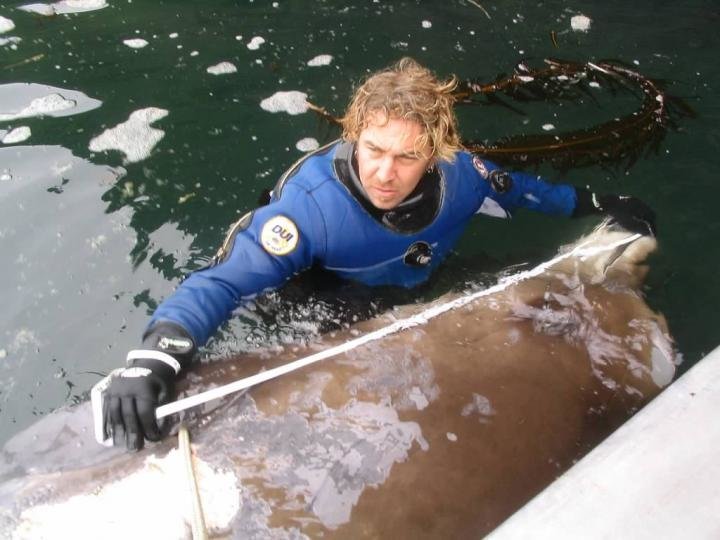
In 2014, the animal turned up dead on the shores of St. George Island, one of the Pribilof Islands in the rugged Bering Sea. It appeared to be similar to a Baird's beaked whale, but it was smaller and had darker skin than the more common cetacean.
"We knew it was not any whale we knew from our area," Michelle Ridgway, a marine ecologist with Oceanus Alaska who documented the whale in the Pribilofs, said in a statement.
Phillip Morin, a research molecular biologist at the National Oceanic and Atmospheric Administration Fisheries' Southwest Fisheries Science Center inspected the DNA of nearly 180 beaked whales discovered around the Pacific Rim. The whale in question, he discovered, along with seven other animals, were members of the new unnamed species, which the Japanese call "karasu," the Japanese word for raven.
"The challenge in documenting the species was simply locating enough specimens to provide convincing evidence," Morin said in a statement. "Clearly this species is very rare, and reminds us how much we have to learn about the ocean and even some of its largest inhabitants."
Beaked whales are one of the ocean's most mysterious creatures. Their beaks, from which they get their names, resemble that of dolphins, but they are deep divers, often descending thousands of feet to feed on squid and bottom fish in underwater canyons, officials said. They are so rare that several new species have been identified in just the last few decades.
An earlier study from Japanese researchers suggested that the whales might be their own species and that's what got Morin started on his search. He found two samples at the Southwest Fisheries Science Center's marine mammal tissue collection, the largest in the world, which appeared to come from the new species.
One came from a dead whale that washed ashore on the Aleutian Islands in 2004, the skeleton from which hangs in an Alaskan high school. From there, Morin sought out samples from the Smithsonian Institution, the Los Angeles County Museum of Natural History and even from Japanese markets where whale meat is sold.
"Japanese whalers have known about the black form but didn't consider it a separate species," Erich Hoyt, a research fellow with Whale and Dolphin Conservation in the United Kingdom and coauthor of the research. "The implication of a new species of beaked whale is that we need to reconsider management of both species to be sure they're sufficiently protected, considering how rare the new one appears to be."
The whales are thought to range between the northern islands of Japan and the Aleutian Islands, which suggests a smaller range than that of the Baird's beaked whale. Some of the animals had bite marks that only could have come from tropical sharks, however, so they likely migrate to tropical waters at some point in their lives.
Still, there remains much to be learned about the new species, Morin said.
"As much as we know about the genetic heritage of this animal, we still do not know very much about the animal itself," Morin said. "We can draw some indications from what we know about other beaked whales in terms of its range and behavior, but we still have many more questions than answers."



Reader Comments
to our Newsletter